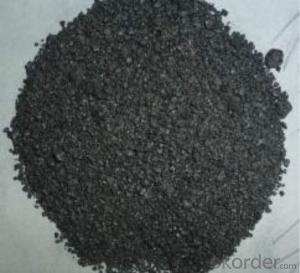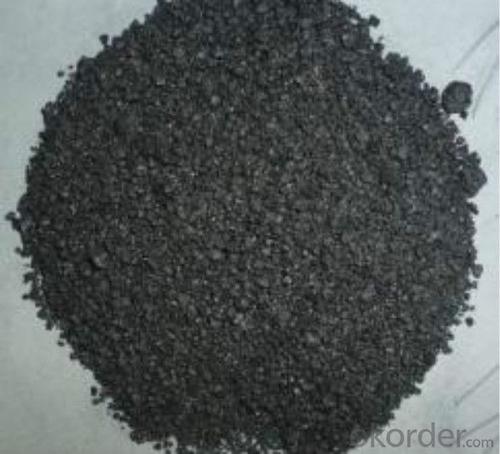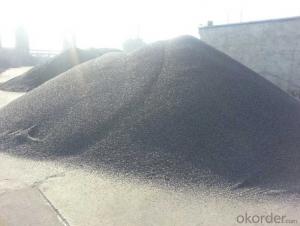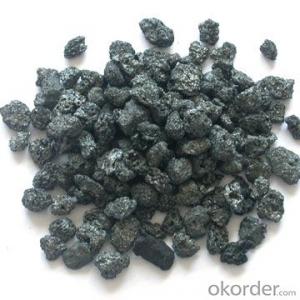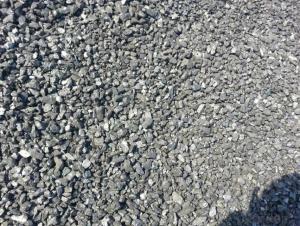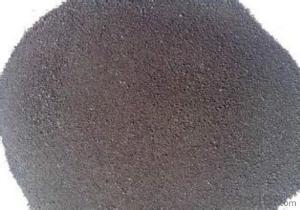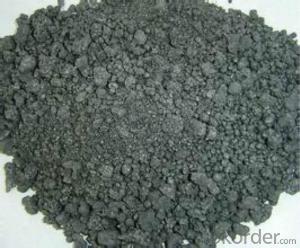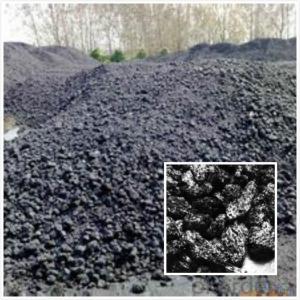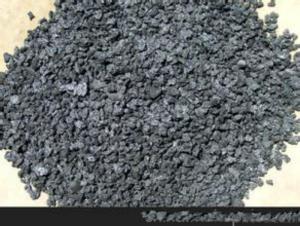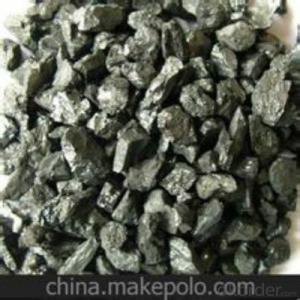FC 99% and Low SCalciend Petroleum Coke as Carbon additive
- Loading Port:
- Tianjin
- Payment Terms:
- TT OR LC
- Min Order Qty:
- 20.8
- Supply Capability:
- 2080 m.t./month
OKorder Service Pledge
OKorder Financial Service
You Might Also Like
Brief introduction
Calcined Petroleum Coke comes from delayed coke which extracted from oil refinery. Although Calcined Petroleum Coke contains a little bit higher level of sulfur and nitrogen than pitch coke, the price advantage still makes it widely used during steel-making and founding as a kind of carbon additive/carburant.
BaoSteel is world famous organization. This calcined petroleum coke's raw material is from Bao Steel, which has great quality guarantee. Bao Steel also named this coke as Pitch Coke.
Features
Our product has follwing advantages:
The morphology, chemistry and crystallinity of recarburisers
have a major impact on the overall casting cost. The combined
application and cost benefits, which are derived through the
use of Desulco, enable foundries to manufacture castings in a
highly cost effective manner.
reduces
Power consumption
Inoculant consumption
MgFeSi consumption
Furnace refractory wear
Scrap rate
Tap to tap time
Slag inclusions risk
Chill
It is playing more and more important role in the industry
increases
Casting microstructure
Productivity
Process consistency
Specifications
Products | CPC | ||
F.C.% | 98.5MIN | 98.5MIN | 98MIN |
ASH % | 0.8MAX | 0.8MAX | 1MAX |
V.M.% | 0.7 MAX | 0.7 MAX | 1 MAX |
SULFUR % | 0. 5MAX | 0. 7MAX | 1MAX |
MOISTURE % | 0.5MAX | 0.5MAX | 1MAX |
Pictures
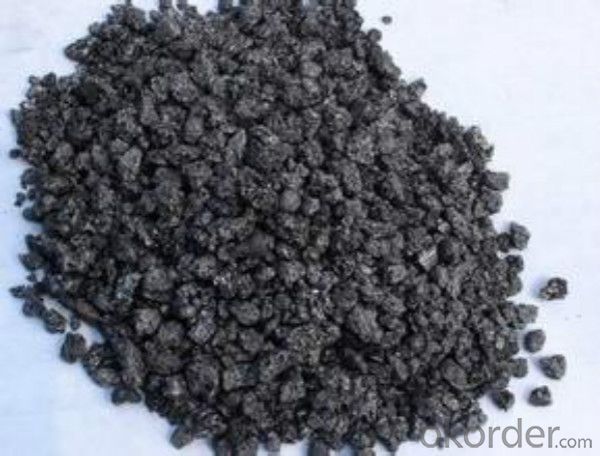
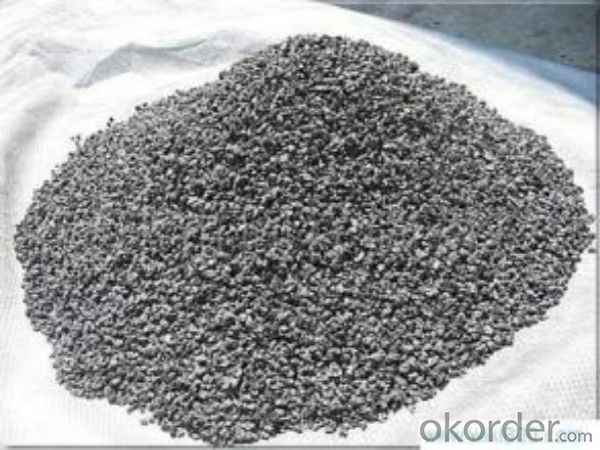
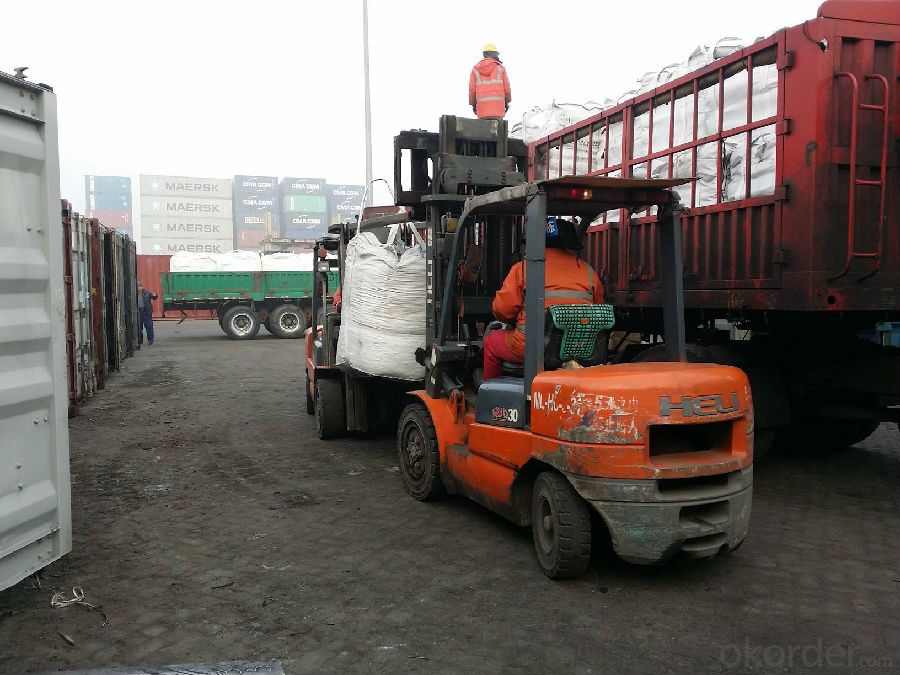
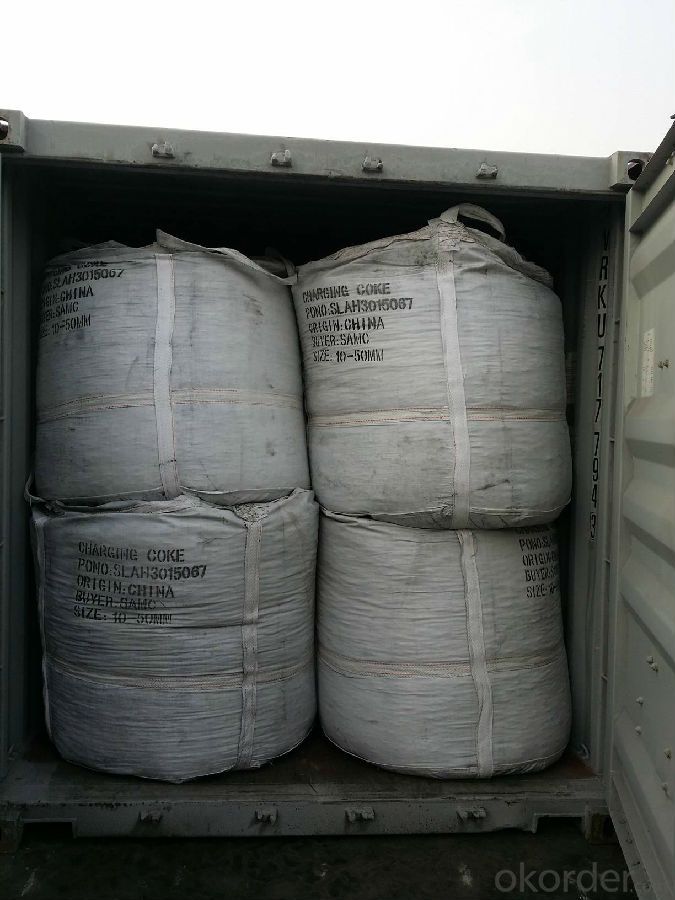
FAQ
1 What is the package?
In jumbo bag with/without pallet
2 What is the delivery time?
25 days after receiving the workable LC or down payment
3 What is the payment term?
T/T, L/C,D/P,D/A
- Q: What is the role of carbonation in carbonated drinks?
- The role of carbonation in carbonated drinks is to provide the refreshing and effervescent sensation that is characteristic of these beverages. Carbonation is the process of dissolving carbon dioxide gas into a liquid, typically water, under pressure. This results in the formation of carbonic acid, which adds a tangy flavor to the drink. Carbonation serves several purposes in carbonated drinks. Firstly, it enhances the taste by adding a unique bubbly sensation that stimulates the taste buds and gives a refreshing mouthfeel. The effervescence created by the carbonation also contributes to the overall sensory experience of the drink, making it more enjoyable to consume. Furthermore, carbonation acts as a natural preservative in carbonated drinks. The carbon dioxide gas inhibits the growth of bacteria and other microorganisms, thereby extending the shelf life of the beverage. This is particularly important for soft drinks that are often stored for extended periods before consumption. In addition to taste and preservation, carbonation plays a role in the presentation of carbonated drinks. The release of carbon dioxide gas from the liquid creates bubbles and fizz, making the drink visually appealing and enticing. This visual appeal is often associated with a feeling of luxury and indulgence. Overall, carbonation is an essential component of carbonated drinks, providing taste, preservation, and visual appeal. It enhances the sensory experience and contributes to the overall enjoyment of these beverages.
- Q: What are the impacts of carbon emissions on natural disasters?
- Carbon emissions have a significant impact on natural disasters, exacerbating their intensity and frequency. One of the most prominent effects of carbon emissions is the contribution to global warming and climate change. As carbon dioxide and other greenhouse gases accumulate in the atmosphere, they trap heat and cause the Earth's temperature to rise. This rising temperature leads to various changes in weather patterns, which in turn increase the likelihood and severity of natural disasters. One of the most obvious impacts of carbon emissions on natural disasters is the intensification of hurricanes and tropical storms. Warmer ocean temperatures provide more energy for these storms, making them stronger and more destructive. Additionally, increased evaporation due to higher temperatures leads to heavier rainfall during storms, increasing the risk of flooding and landslides. Carbon emissions also contribute to the melting of glaciers and polar ice caps, leading to rising sea levels. This rise in sea levels increases the vulnerability of coastal areas to storm surges and flooding during hurricanes and typhoons. Low-lying regions and island nations are particularly at risk, as they face the possibility of losing their land to rising waters. Furthermore, carbon emissions play a role in the occurrence and severity of wildfires. As temperatures rise, vegetation becomes drier, creating ideal conditions for wildfires to ignite and spread quickly. These wildfires can devastate vast areas of land, destroying ecosystems, homes, and livelihoods. Another impact of carbon emissions on natural disasters is the disruption of weather patterns. Climate change is altering rainfall patterns, leading to longer and more severe droughts in some regions, while others experience more frequent and intense rainfall events. These changes in precipitation patterns can result in prolonged droughts, water scarcity, and increased risk of wildfires in some areas, while others face increased flooding and landslides. In conclusion, carbon emissions have a profound impact on natural disasters. They contribute to global warming and climate change, intensifying hurricanes, increasing the risk of flooding, raising sea levels, fueling wildfires, and disrupting weather patterns. It is crucial to reduce carbon emissions and transition to clean and sustainable energy sources to mitigate these impacts and protect our planet from the devastating effects of natural disasters.
- Q: What are the consequences of increased carbon emissions on vulnerable communities?
- Vulnerable communities bear the brunt of severe consequences caused by the increase in carbon emissions. To begin with, these communities lack the necessary resources and infrastructure to adapt to and alleviate the impacts of climate change. The contribution of carbon emissions to global warming makes it more likely for these communities to experience extreme weather events, such as hurricanes, floods, and heatwaves. Consequently, displacement, loss of homes, and even loss of lives disproportionately affect those who are already marginalized. Moreover, the rise in carbon emissions leads to air pollution, which poses significant health risks to vulnerable communities. Inhabitants of low-income areas often reside in close proximity to industrial plants or highways with high emission levels, increasing their vulnerability to respiratory diseases, cardiovascular problems, and other health issues. This is particularly true for children, the elderly, and individuals with pre-existing health conditions. The consequences of increased carbon emissions also extend to food security. Climate change disrupts agriculture and alters the timing of growing seasons, resulting in reduced crop yields and food shortages. Vulnerable communities heavily dependent on subsistence farming or residing in areas prone to droughts or floods are at risk of malnutrition and hunger. This further aggravates existing inequalities and can lead to social unrest and economic instability. Furthermore, vulnerable communities often rely on natural resources, such as fishing, forestry, or tourism, for their livelihoods. The negative impacts of carbon emissions, such as ocean acidification and coral bleaching, jeopardize these industries, leading to job losses and economic decline. This perpetuates the cycle of poverty and socio-economic vulnerability. In conclusion, increased carbon emissions disproportionately harm vulnerable communities by exacerbating existing inequalities and intensifying the challenges they face. It is crucial to address these consequences through climate mitigation efforts, adaptation strategies, and support for sustainable development.
- Q: What are the effects of carbon emissions on the stability of wetlands?
- Carbon emissions have significant effects on the stability of wetlands. Increased carbon emissions contribute to global warming, causing rising temperatures and altered precipitation patterns, which in turn lead to changes in the hydrological cycle. These changes impact the water balance and distribution within wetland ecosystems, potentially resulting in increased drying and loss of water-dependent vegetation. Additionally, carbon emissions can lead to increased acidity in wetland waters, which can harm aquatic life and disrupt the delicate balance of the ecosystem. Overall, carbon emissions pose a significant threat to wetlands, jeopardizing their stability and the many benefits they provide, such as water filtration, carbon sequestration, and habitat for diverse plant and animal species.
- Q: DNF new advanced furnace rock carbon reinforcement +10 50 powder weapons, the upper 11 probability of success is how much, how many advanced furnace rock carbon?
- Specifically, for a random item / skill, there is an initial probability, called C. (for each item / skills are different) for example, roaming learned a 10 crit, so he first attack crit rate is C, if not crit, then the next attack, the system will take the chance to crit increased to 2C, if not a crit, then to improve to 3C... Until a crit, and start all over. The next chance of crit returns to the very beginning of C. (obviously, if has not crit, so after a certain number of attacks on X X*C>1, then this will surely be a crit) this is our game in random, many people may have noticed that some of our props inside the game, such as Tara jewelry sets BUFF probability is 1%, but in fact the BUFF probability is much more than 1%. Many props are like this, such as the title of death, robot necklace...... The odds of a low probability are high. The reason is that everything in the game is pseudo random, and our random values are always superimposed, that is to say, definitely. Strengthening equipment is the reverse, for the first time is 100%, and then multiplied by a C, has been multiplied to the probability of infinity approaching 0...... So the cushion works in theory. Believe to see, understand the players have already understood, want to play high carbon to the biggest use, depend on mat. After understanding this point of view we can count the cost of the 20 high carbon equipment 8 yuan then taking yxb:rmb1:20 as an example, if more than 160W will use cost-effective equipment than carbon somehow expensive ~ here is to provide you a way
- Q: What is carbon nanotube?
- A carbon nanotube is a cylindrical structure made of carbon atoms arranged in a hexagonal pattern. It has unique properties, such as high strength, light weight, and excellent conductivity, which make it useful in various fields including electronics, materials science, and nanotechnology.
- Q: What are the effects of carbon emissions on the stability of desertification?
- Carbon emissions contribute to the stability of desertification by exacerbating its effects. Increased atmospheric carbon dioxide levels lead to global warming, which in turn intensifies droughts and reduces precipitation in arid regions. This prolonged dryness accelerates soil degradation, reduces vegetation cover, and undermines the ability of arid ecosystems to sustain life. Therefore, carbon emissions play a significant role in destabilizing desertification processes and further threatening the stability of arid landscapes.
- Q: What does carbon cloth tonnage mean?
- Carbon cloth tonnage is illegal: mean a square centimeter of sectional area of carbon cloth tension of tonnage. Meaning that the carbon cloth rolled into a solid "rod" if the cross-sectional area of the bar is 1 cm, the maximum tension tonnage it bear -- carbon cloth tonnage.
- Q: What is the primary source of carbon monoxide in the atmosphere?
- The primary source of carbon monoxide in the atmosphere is the incomplete combustion of fossil fuels. When fossil fuels like coal, oil, and natural gas are burned for energy production, vehicles, or industrial processes, carbon monoxide is released into the air. In addition to human activities, natural sources such as volcanic eruptions and forest fires can also contribute to the presence of carbon monoxide in the atmosphere. However, the majority of carbon monoxide emissions can be attributed to human activities, making it an important air pollutant to address in order to protect human health and the environment.
- Q: Today in the market to buy Yuba, instructions have such a word that I don't understand, please master Zhijiao: carbon fiber after energized carbon molecule formation of Brown movement, this movement can be effective in most of the electrical energy into the far infrared.
- They are the transition of vibrational levels or rotational levels under conditions of carbon energization. All molecules are doing irregular movements, for example, there is a bond between two molecules, equivalent to a spring connecting two balls connected to two balls, they vibrate, the frequency is v.
Send your message to us
FC 99% and Low SCalciend Petroleum Coke as Carbon additive
- Loading Port:
- Tianjin
- Payment Terms:
- TT OR LC
- Min Order Qty:
- 20.8
- Supply Capability:
- 2080 m.t./month
OKorder Service Pledge
OKorder Financial Service
Similar products
Hot products
Hot Searches
